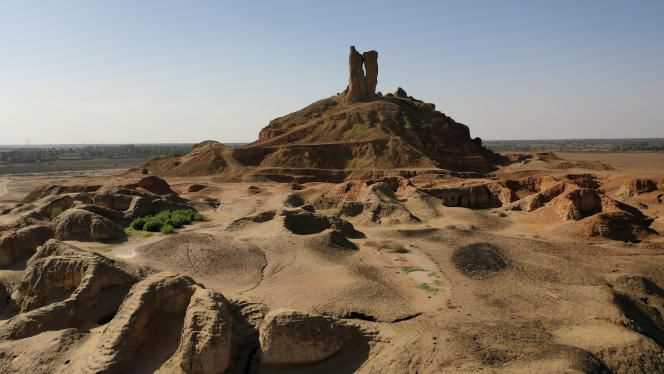ARTE – SATURDAY, SEPTEMBER 25 AT 8.50 P.M. – DOCUMENTARY
It is in the footsteps of Jawad Bashara that Arte takes us to the (re) discovery of the heritage left by the first civilization that appeared five thousand years before Jesus Christ, in the Fertile Crescent, between the Tigris and the Euphrates. This 64-year-old Iraqi writer and journalist, exiled in France since the dictatorship of Saddam Hussein, was devastated by the destruction inflicted on Mesopotamian sites in northern Iraq by the Islamic State (IS) organization between 2014 and 2017. He therefore set out on a quest to save and preserve this endangered heritage.
For three years, using new technologies and 3D, and with the help of renowned archaeologists, his teams modeled monuments and objects to constitute a digital Noah’s ark. From the south to the north of Iraq, according to the reconquest of the territories in the hands of the IS, international teams of archaeologists were able to resume their excavations, after a hiatus of more than thirty years, of the preserved sites of the jihadist invasion to those partially or totally destroyed by Daesh (Arabic acronym for ISIS).
Virtual reconstructions
This quest, embellished with interviews with specialists, extracts from ancient texts and virtual reconstructions, composes a rich and fascinating documentary which traces the many contributions of Mesopotamia, cradle of humanity, to the world: invention of the writing, improvement of agriculture and architecture, the first city-states …
In April 2016, Jawad Bashara returned for the first time to his hometown, Babel (Babylon). He begins his mission in the Iraqi marshes, an ecosystem where the inhabitants continue to live according to the ancestral way of life and the techniques inherited from the Sumer era: reed weaving and clay construction. The tradition of moudhif has continued. In these vegetal cathedrals where the community gathers were transmitted the founding myths, such as the epic of Gilgamesh, whose story of the flood inspired the biblical episode of Noah’s ark.
The desire to master this harsh nature was at the origin of the invention of the ziggurat, a square tower with floors made of clay bricks, which has become the symbol of Mesopotamian civilization. That of Nimroud, in the north of the country, was bulldozed by IS.
In the south of the country, not all of them have stood the test of time. We can guess the traces in Eridu and Larsa, where the French archaeologists Philippe Quenet and Régis Vallet are excavating. They served as a space for the staging of power, political and religious, in an unprecedented social organization, which established the distribution of tasks and the specialization of trades. Cuneiform writing, the oldest tablets of which were found in Uruk, the first city-state, accompanied the development of this urban life.
The journey ends in ancient Babylon (about sixty kilometers south of Baghdad), where Mesopotamian civilization reached its peak before the advent of the Persian Empire, in 539 BC. , the journalist-writer models the bases of the ziggurat, discovered in 1920, the probable location of the mythical Tower of Babel, erected, according to biblical tradition, by King Nimroud in challenge to the gods to avoid a second flood.
Treasures of Mesopotamia. Archaeologists facing Daesh, by Ivan Erhel, Jean-Christophe Vaguelsy, Sallah-Edine Ben Jamaa and Pascal Cuissot (Fr., 2021, 90 min). On Arte.tv until 1er November.
